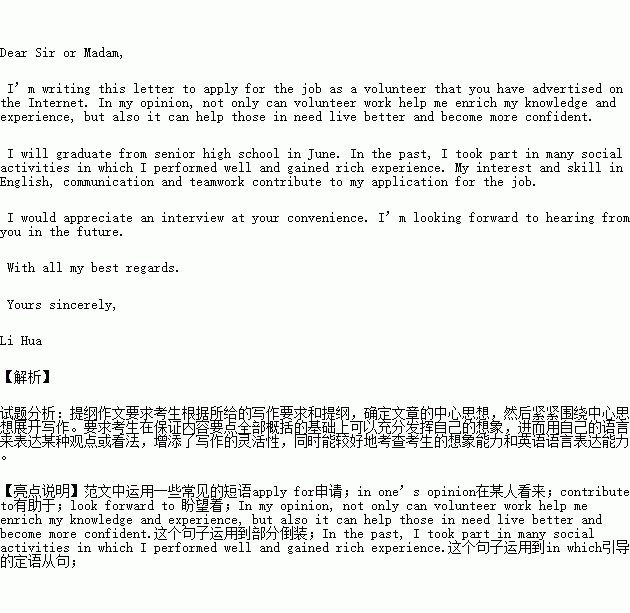题目内容
假定你是高三学生李华,从网上获悉一家国际青少年志愿者组织正在全球招募暑期志愿者。请写一封电子邮件申请参加。主要内容如下:
1.写信目的;
2.自我介绍;
3.希望获准。
注意:
1.词数100左右;
2.文章的结尾已给出,不计入总词数;
3.可适当增加细节,以使行文连贯。
Dear Sir or Madam,
____________________________________________________________________________________________
____________________________________________________________________________________________
____________________________________________________________________________________________
____________________________________________________________________________________________
____________________________________________________________________________________________
____________________________________________________________________________________________
____________________________________________________________________________________________
With all my best regards.
Yours sincerely,
Li Hua
 阅读快车系列答案
阅读快车系列答案
